Wairau Māori Art Gallery - Te Pou Tāhuhu A Kūkupa
A stunning pou was installed outside the entrance to Hundertwasser Art Centre with Wairau Māori Art Gallery and unveiled at a dawn ceremony the day before opening. Created by tohunga whakairo/ carver Chris Bailey, the pou is a proud part of the Wairau Māori Art Gallery collection.
About the name Te Pou Tāhuhu A Kūkupa: Pou tāhuhu are posts which support the ridge pole of a wharenui (meeting house). Kūkupa is an important tupuna (ancestor) for Te Parawhau.
The bodies of Ranginui and Papatūānuku spiral up around the pou. These spirals hint at the form of the tokotoko (carved stick) and all that the tokotoko carries with it when held by the kai kōrero (orator). They also symbolise the basis of life, mātauranga pītau ira (DNA).
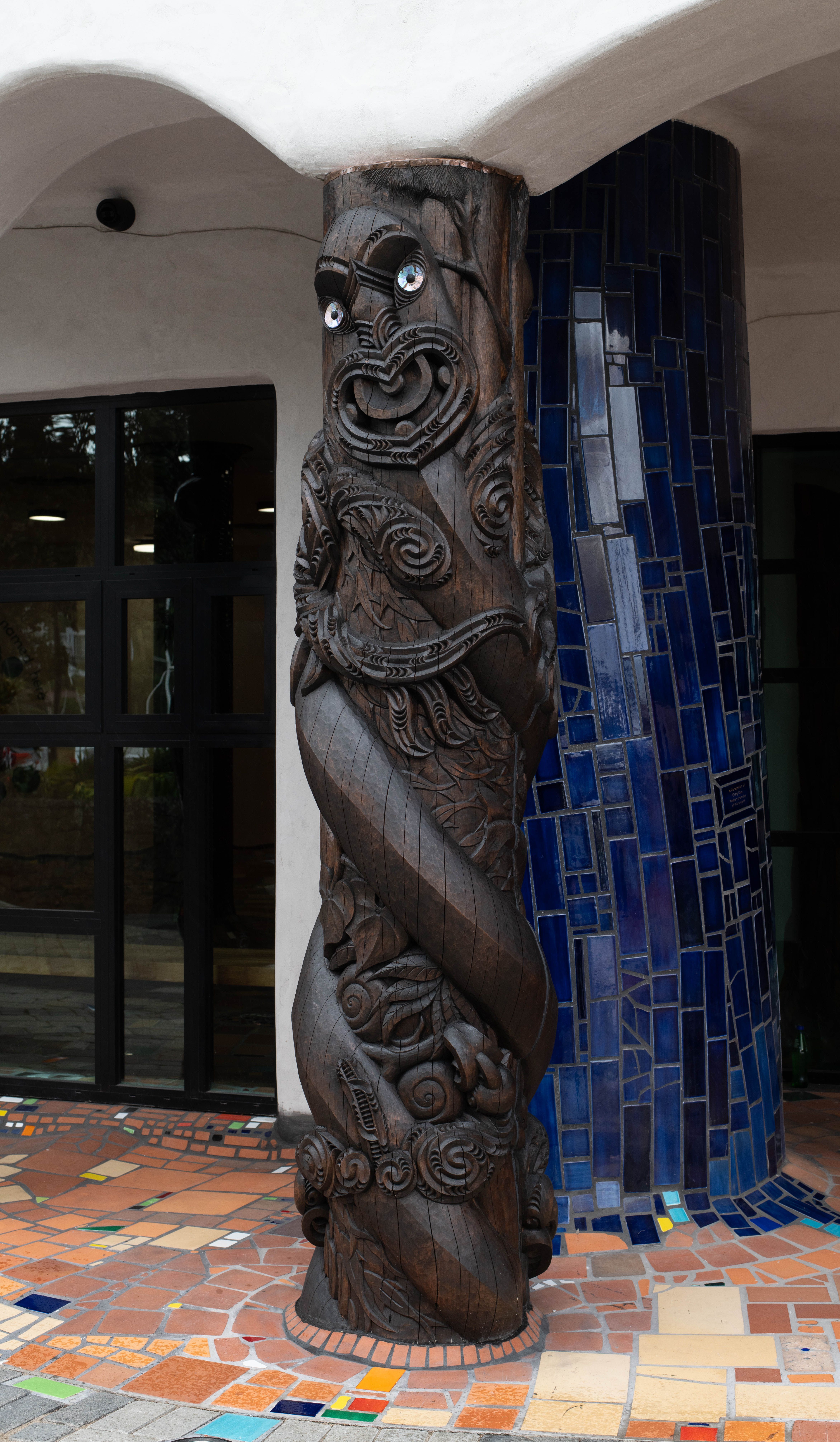
The two spaces that sit between the spiralling bodies capture Te Waiū – the breast milk, symbolic of the land and harbour of plenty, referring to the source, our tūpuna, Te Atakura, symbolic of plentiful abundance and sustenance, personified by the red skies of dawn of each new day, bathing and flowing overall. Te Atakura is represented by the red sun rising over the Te Whara (Whangārei Heads) on the upper section on the pou. Whangārei was always famous for its abundance in every kind of food.

The first spiral represents the waterways with the harbour at the top, and the rivers and streams flowing into the harbour. In this space we see the mighty Parāoa (sperm whale) metaphoric for the gathering in council of rangatira (chiefs), aua (herrings), kutae (mussels) all the way through to the tuna (eels) that live in the rivers at the base of the pou.
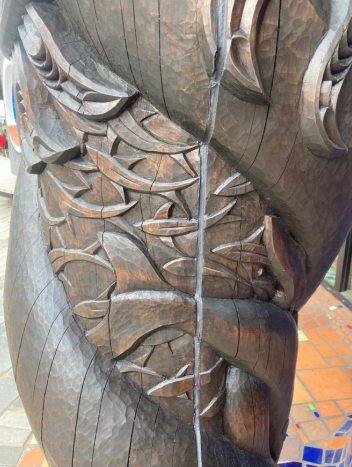
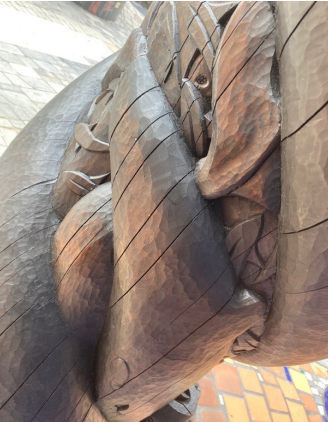
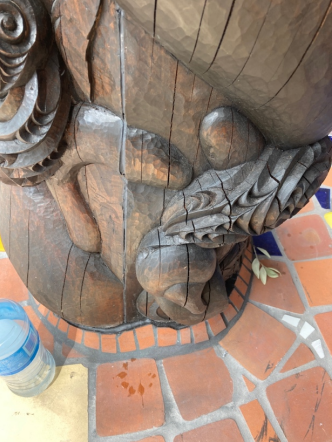
The second spiral shows the land and its bountifulness, the mighty Kauri and ngāhere (native forest) at the top, coming down we find the cultivated foods represented by hue (gourds), plentiful birdlife represented by Kūkūpa (wood pigeon) and the Pūpūrangi ( Kauri snails).
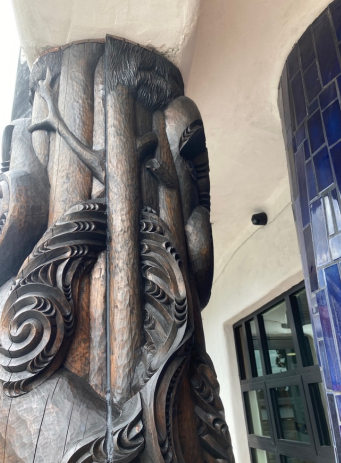
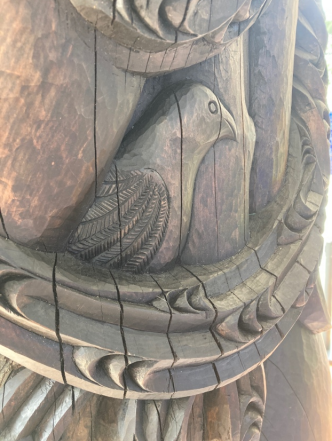
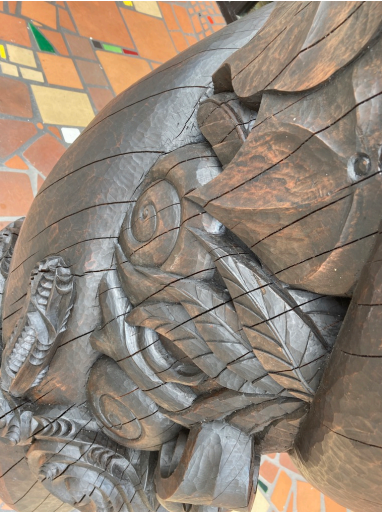
Ranginui faces outwards ever watching and acting as Kaitiaki (guardian, protector, sentinel) for the centre, Papatuānuku faces inwards, protective/protected, nurturing and as the hinengaro (awareness, consciousness) of all. It is she who provides wisdom to our men.
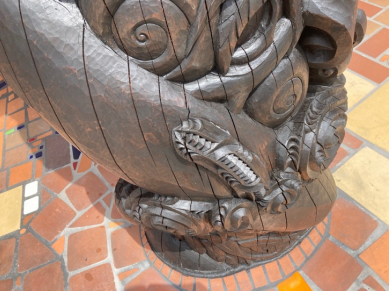
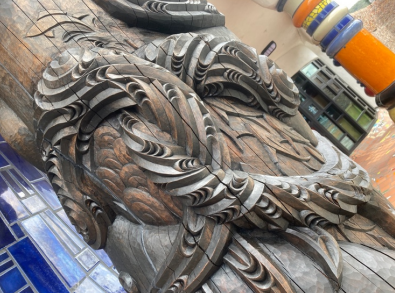
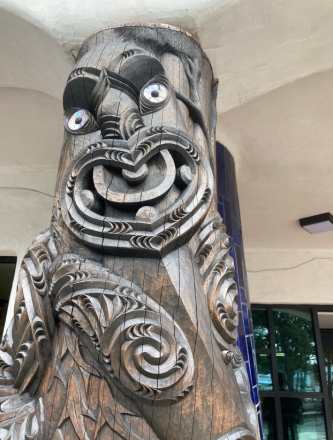
The pou supports in a symbolic way the backbone of “Te Whare Hononga o Hundertwasser me Wairau” – “The Interconnected House of Hundertwasser and Wairau”
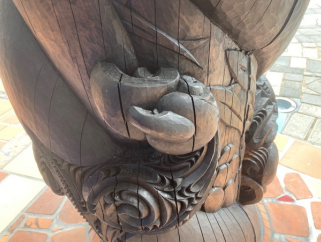
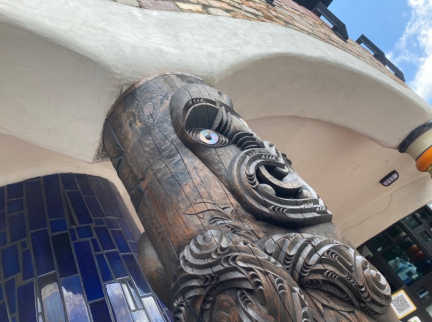
Ranginui and Papatūānuku also allude symbolically and by association to our many, illustrious male and female tūpuna of Te Parawhau.
Te Parawhau (Te Pouwhenua o Tiakiriri Kūkupa Trust – Te Parawhau ki Tai) have been an integral partner in the process of building the centre providing all the required karakia for the various stages and processes as well as the themes and stories of the pou. The greater part of Whangārei sits upon traditional lands, the harbour and waterways of Te Parawhau.